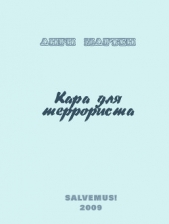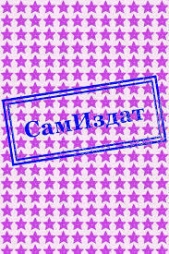Настольная книга террориста

Настольная книга террориста читать книгу онлайн
Внимание! Книга может содержать контент только для совершеннолетних. Для несовершеннолетних чтение данного контента СТРОГО ЗАПРЕЩЕНО! Если в книге присутствует наличие пропаганды ЛГБТ и другого, запрещенного контента - просьба написать на почту [email protected] для удаления материала
3.34 T.N.T.
T.N.T., or Tri-Nitro-Toluene, is perhaps the second oldest known high explosive. Dynamite, of course, was the first. It is certainly the best known high explosive, since it has been popularized by early morning cartoons. It is the standard for comparing other explosives to, since it is the most well known. In industry, a T.N.T. is made by a three step nitration process that is designed to conserve the nitric and sulfuric acids which are used to make the product. A terrorist, however, would probably optain it for the less economical one step method. The one step process is performed by treating toluene with very strong (fuming) sulfuric acid. Then, the sulfated toluene is treated with very strong (fuming) nitric acid in an ice bath. Cold water is added the solution, and it is filtered.
3.35 POTASSIUM CHLORATE
Potassium chlorate itself cannot be made in the home, but it can be obtained from labs. If potassium chlorate is mixed with a small amount of vaseline, or other petroleum jelly, and a shockwave is passed through it, the material will detonate with slightly more power than black powder. It must, however, be confined to detonate it in this manner. The procedure for making such an explosive is outlined below:
MATERIALS EQUIPMENT ~~~~~~~~~ ~~~~~~~~~ potassium chlorate zip-lock plastic bag (9 parts, by volume) clay grinding bowl petroleum jelly or (vaseline) wooden bowl and wooden spoon (1 part, by volume)
1) Grind the potassium chlorate in the grinding bowl carefully and slowly, until the potassium chlorate is a very fine powder. The finer that it is powdered, the faster (better) it will detonate.
2) Place the powder into the plastic bag. Put the petroleum jelly into the plastic bag, getting as little on the sides of the bag as possible, i.e. put the vaseline on the potassium chlorate powder.
3) Close the bag, and kneed the materials together until none of the potassium chlorate is dry powder that does not stick to the main glob. If necessary, add a bit more petroleum jelly to the bag.
4) The material must me used within 24 hours, or the mixture will react to greatly reduce the effectiveness of the explosive. This reaction, however, is harmless, and releases no heat or dangerous products.
3.36 DYNAMITE
The name dynamite comes from the Greek word "dynamis", meaning power. Dynamite was invented by Nobel shortly after he made nitroglycerine. It was made because nitroglycerine was so dangerously sensitive to shock. A misguided individual with some sanity would, after making nitroglycerine (an insane act) would immediately convert it to dynamite. This can be done by adding various materials to the nitroglycerine, such as sawdust. The sawdust holds a large weight of nitroglycerine per volume. Other materials, such as ammonium nitrate could be added, and they would tend to desensitize the explosive, and increase the power. But even these nitroglycerine compounds are not really safe.
3.37 NITROSTARCH EXPLOSIVES
Nitrostarch explosives are simple to make, and are fairly powerful. All that need be done is treat various starches with a mixture of concentrated nitric and sulfuric acids. 10 ml of concentrated sulfuric acid is added to 10 ml of concentrated nitric acid. To this mixture is added 0.5 grams of starch. Cold water is added, and the apparently unchanged nitrostarch is filtered out. Nitrostarch explosives are of slightly lower power than T.N.T., but they are more readily detonated.
3.38 PICRIC ACID
Picric acid, also known as Tri-Nitro-Phenol, or T.N.P., is a military explosive that is most often used as a booster charge to set off another less sensitive explosive, such as T.N.T. It another explosive that is fairly simple to make, assuming that one can acquire the concentrated sulfuric and nitric acids. Its procedure for manufacture is given in many college chemistry lab manuals, and is easy to follow. The main problem with picric acid is its tendency to form dangerously sensitive and unstable picrate salts, such as potassium picrate. For this reason, it is usually made into a safer form, such as ammonium picrate, also called explosive D. A social deviant would probably use a formula similar to the one presented here to make picric acid.
MATERIALS EQUIPMENT ~~~~~~~~~ ~~~~~~~~~ phenol (9.5 g) 500 ml flask concentrated adjustable heat source sulfuric acid (12.5 ml) 1000 ml beaker concentrated nitric acid (38 ml) or other container distilled water suitable for boiling in
filter paper and funnel
glass stirring rod
1) Place 9.5 grams of phenol into the 500 ml flask, and carefully add 12.5 ml of concentrated sulfuric acid and stir the mixture.
2) Put 400 ml of tap water into the 1000 ml beaker or boiling container and bring the water to a gentle boil.
3) After warming the 500 ml flask under hot tap water, place it in the boiling water, and continue to stir the mixture of phenol and acid for about thirty minutes. After thirty minutes, take the flask out, and allow it to cool for about five minutes.
4) Pour out the boiling water used above, and after allowing the container to cool, use it to create an ice bath, similar to the one used in section 3.13, steps 3-4. Place the 500 ml flask with the mixed acid an phenol in the ice bath. Add 38 ml of concentrated nitric acid in small amounts, stirring the mixture constantly. A vigorous but "harmless" reaction should occur. When the mixture stops reacting vigorously, take the flask out of the ice bath.
5) Warm the ice bath container, if it is glass, and then begin boiling more tap water. Place the flask containing the mixture in the boiling water, and heat it in the boiling water for 1.5 to 2 hours.
6) Add 100 ml of cold distilled water to the solution, and chill it in an ice bath until it is cold.
7) Filter out the yellowish-white picric acid crystals by pouring the solution through the filter paper in the funnel. Collect the liquid and dispose of it in a safe place, since it is corrosive.
8) Wash out the 500 ml flask with distilled water, and put the contents of the filter paper in the flask. Add 300 ml of water, and shake vigorously.
9) Re-filter the crystals, and allow them to dry.
10) Store the crystals in a safe place in a glass container, since they will react with metal containers to produce picrates that could explode spontaneously.
3.39 AMMONIUM PICRATE
Ammonium picrate, also called Explosive D, is another safety explosive. It requires a substantial shock to cause it to detonate, slightly less than that required to detonate ammonium nitrate. It is much safer than picric acid, since it has little tendency to form hazardous unstable salts when placed in metal containers. It is simple to make from picric acid and clear household ammonia. All that need be done is put the picric acid crystals into a glass container and dissolve them in a great quantity of hot water. Add clear household ammonia in excess, and allow the excess ammonia to evaporate. The powder remaining should be ammonium picrate.
3.40 NITROGEN TRICHLORIDE
Nitrogen trichloride, also known as chloride of azode, is an oily yellow liquid. It explodes violently when it is heated above 60 degrees celsius, or when it comes in contact with an open flame or spark. It is fairly simple to produce.
1) In a beaker, dissolve about 5 teaspoons of ammonium nitrate in water. Do not put so much ammonium nitrate into the solution that some of it remains undissolved in the bottom of the beaker.
2) Collect a quantity of chlorine gas in a second beaker by mixing hydrochloric acid with potassium permanganate in a large flask with a stopper and glass pipe.
3) Place the beaker containing the chlorine gas upside down on top of the beaker containing the ammonium nitrate solution, and tape the beakers together. Gently heat the bottom beaker. When this is done, oily yellow droplets will begin to form on the surface of the solution, and sink down to the bottom. At this time, remove the heat source immediately.






















